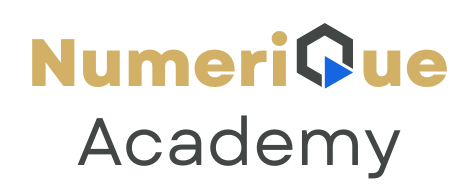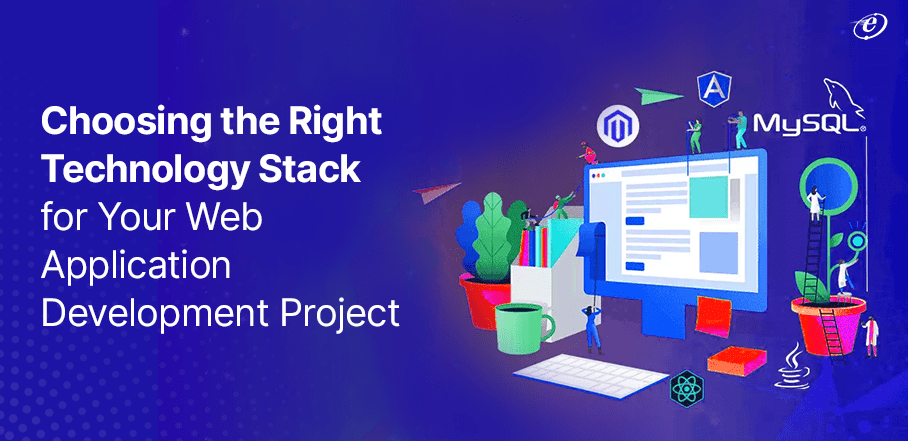When you start a new web development project, the first and foremost decision you have to make is selecting the right tech stack. A tech stack refers to a combination of programming languages, libraries, tools, and frameworks used for building a web application.
The wrong choice can lead to poor performance, developer frustration, and scalability issues. But the right one? It can help you build a product faster, cheaper, and with long-term growth in mind.
In this guide, we’ll walk you through how to choose the right web development stack for your project based on your goals, budget, team, and tech requirements.
What is a Web Development Stack?
A web development stack typically includes:
- Frontend (Client-side): Everything users see and interact with (HTML, CSS, JavaScript).
- Backend (Server-side): Manages database operations, user authentication, server logic (e.g., Node.js, PHP, Python).
- Database: Stores app data (e.g., MongoDB, MySQL, PostgreSQL).
- Server: Hosts the app (e.g., Apache, Nginx).
Stacks can be monolithic (everything in one system) or modular (separated frontend/backend). The most common ones include:
- MERN: MongoDB, Express.js, React, Node.js
- MEAN: MongoDB, Express.js, Angular, Node.js
- LAMP: Linux, Apache, MySQL, PHP
- JAMstack: JavaScript, APIs, and Markup
Step 1: Define Your Project Requirements
Before picking a stack, answer these questions:
- Is your project simple or complex?
- Static landing page? A site builder or JAMstack might be fine.
- Dynamic marketplace or SaaS? You’ll need a more powerful stack.
- What is your timeline?
- If you need a quick MVP, go with tools that enable rapid development (e.g., Ruby on Rails, Laravel, Firebase).
- What are your performance needs?
- High-traffic apps need scalable solutions like Node.js with PostgreSQL or Go with a microservices architecture.
- Is SEO critical?
- If yes, choose a framework with SSR (Server-Side Rendering) like Next.js or Nuxt.js for better crawlability.
Step 2: Consider Your Team’s Skillset
Choose a stack your developers are already comfortable with unless you’re willing to invest in training.
- If your team knows JavaScript well, a full JS stack like MERN or MEAN is ideal.
- If you’ve got experienced PHP developers, LAMP could be a better fit.
- Want something beginner-friendly? Python with Django has a clean learning curve and excellent documentation.
Pro Tip: A great stack is worthless if your team can’t build with it efficiently.
Step 3: Budget Constraints
Some stacks come with licensing fees or higher server costs. For lean startups, open-source stacks like MERN or LAMP are cost-effective.
Also factor in:
- Hosting requirements
- Third-party integrations
- DevOps tools and pipelines
Free hosting platforms like Vercel, Netlify, and Render work seamlessly with JS frameworks like Next.js and React.
Step 4: Think Scalability & Future Maintenance
If you’re building a long-term product:
- Choose a stack that is actively maintained.
- Look at the community size (large communities = more support, plugins, and documentation).
- Pick modular systems that let you scale each component independently.
For example:
- Use microservices with Docker & Kubernetes for complex backend systems.
- Choose React or Vue for frontend scalability.
- Use GraphQL for dynamic data fetching in large apps.
Popular Stacks & Their Ideal Use Cases
| Stack | Best For | Key Strengths |
| MERN | Dynamic apps, SPAs | Full JS stack, fast dev |
| LAMP | CMS websites | Stable, widely supported |
| MEAN | Enterprise apps | Angular + Node power |
| JAMstack | Static sites | Speed, SEO, easy deployment |
| Django + React | Data-driven apps | Clean backend, modern frontend |
| Ruby on Rails | MVPs, startups | Rapid prototyping |
| Next.js + Tailwind | Marketing & SEO | SSR, speed, design flexibility |
Final Thoughts
The best tech stack isn’t about using the most hyped technology. It’s about using what works for your project, your team, and your goals.
Here’s a quick checklist before you decide:
- Does it support the features you need?
- Can your team work with it comfortably?
- Is it scalable and well-supported?
- Will it fit your timeline and budget?
If you answer “yes” to all of the above—congrats, you’ve found your stack!

